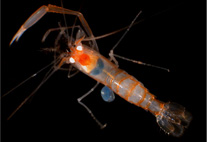Abstract
Diaphanidae has traditionally been considered the basal family of the heterobranch gastropod clade Cephalaspidea with 14 species present in Europe ascribed to five genera. The monophyletic status of the family is controversial because of lack of sound synapomorphies. In this paper we present a review of the diversity of Diaphanidae in Europe and give new data on the morphology and anatomy of 50% of the species together with a synopsis of the relevant systematic characters to distinguish between all European species and genera. The rare species Colobocephalus costellatus is redescribed and shown alive for the first time.
Further evidence supporting the non-monophyly of Diaphanidae is given; no synapomorphies were found to unite traditional Diaphanidae taxa, but three groups can be recognized: (1) Diaphaninae with genus Diaphana is united by a globose external, thin, and umbilicate shell and radulae with a bilobed rachidian tooth; (2) Toledoniinae, with genera Toledonia and Bogasonia share the presence of a shell with elevated spire and radulae with a unicuspid rachidian tooth; and (3) an unnamed group, with Colobocephalus and Colpodaspis which are the only genera with internal shells, sculptured and globose with short but protruding spires, and radulae lacking rachidian tooth and with smooth hook-shaped lateral teeth.

